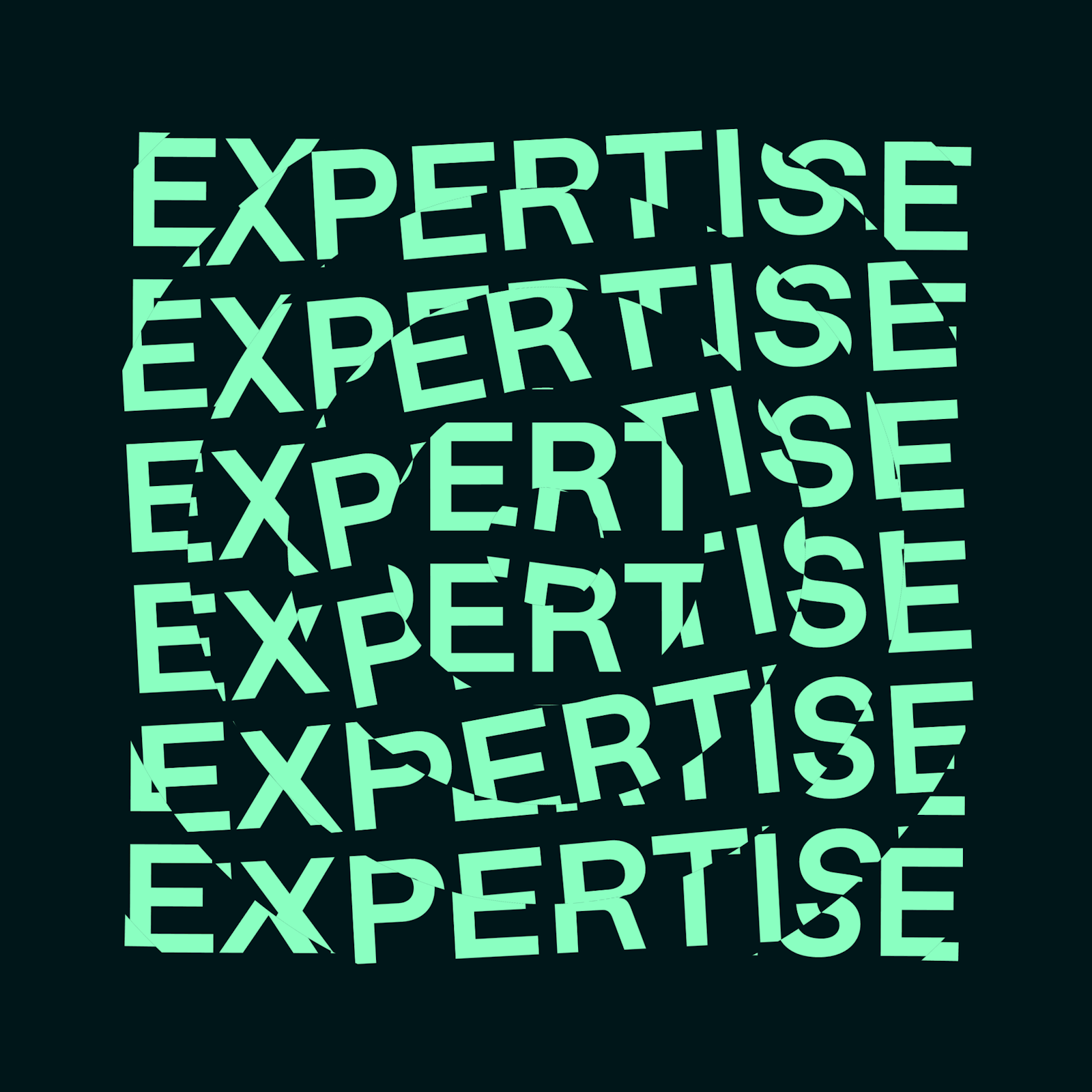Back to Blog
The Value of Expertise: Why We Still Need the Nerds!
Jamie Bitmead - 16 August 2023 - 5 min read

AI makes anything possible, but human touch makes it meaningful
It’s fair to say that information is more widely accessible now than ever before, meaning that almost anyone with access to a computer and the internet can try their hand at any number of creative processes. With enough Googling and tutorials, even a layman like me can attempt to churn out something from complex programs like Cinema 4D or stitch together some video in Adobe After Effects.
However, it is with a deeper understanding, true expertise and nuance where we see true value. We need the dedicated hard workers that strive for perfection and approach problems laterally, we need people who are obsessed with what they do, we need nerds!
Prosthetic Knowledge
As a Senior Designer I still sometimes find myself struggling with creative software or a new complex process, when that happens the first port of call is normally to head straight to Google or YouTube to find the fix. The phrase I associate with this is ‘Prosthetic Knowledge’, coined on medium.com as “Information that a person does not know, but can access as needed using technology". No matter how specific the roadblock in my process is, you can be sure that some 14 year old whizkid halfway across the globe has uploaded a tutorial to guide me step-by-step through the resolution and I’m just a search bar away from finding that fix. So the challenge becomes one of authenticity. How do you stand out from the crowd and show true value in what you do when information about design’s dark arts is so widely disseminated? The fact is, that almost all of these resources were created to solve issues faced by the original innovators, the person who asked the right question in the first place and started the trend.
Tutorials and more frequently now AI software, can clearly provide a wealth of information and assistance, but they can't replace the knowledge of an expert who has worked in their field for many years. Being obsessed about design over a long period of time will lead to an understanding of the industry trends, patterns that will allow you to make connections that others can't. It's more important than ever to be able to think critically about the content in front of us, AI and tutorials can provide us with information but they can't tell us how to react or feel about that information.
Context Informs Content
In design we are often asked the same questions:
- How can we reach our target audience?
- How should we take this product to market?
- What should our branding look like?
But the answers can never be the same as the last time because the context will always be different. The target audience, the product, and the market are all constantly changing. What worked for one company in one year may not work for another company in the next year. That's why it's important for designers to be able to think critically and creatively. They need to be able to understand the unique context of each situation and come up with new and innovative tailored solutions. There are no easy answers in design, but by being able to think independently, designers can help businesses cut through the noise in order to reach their goals, build strong brands and evoke the right emotional response from their target audience. These responses are at their strongest when they are unique and memorable. By understanding what has come before and what is likely to come next, we can position our creative response accordingly.
A recent example of this within Rhapsody has been the ‘Ordinary Objects Extraordinary Journeys’ project for the Holocaust Memorial Day Trust. This project is by its very nature a sensitive and compassionate subject matter that required a tailored approach in order to tell the story. Rhapsody needed to rely on our creative team's understanding and expertise in order to find the right solution. For instance, the serif typeface used in the project is Nocturne designed by Mateusz Machalski, the typeface was inspired by the letters from stone plaques commemorating the victims of the Second World War in Warsaw and by pre-war Hebrew signs. The colours also had to be picked with sensitivity due to related historical connotations, in the end the palettes we chose were complementary to the objects themselves - echoing the subject matter and making the website more intuitive to navigate.
Only through our creative experience were we able to find the required solution for the client. Following trends or relying on AI processes would not have led to an answer that would have been appropriate to the subject matter of this project.

“It was incredible seeing our ideas for the project not just brought to life, but enhanced, strengthened and advanced by Rhapsody. We are so thrilled with the final result and are confident the website will achieve our goals.” – Dr Rachel Century, Director of Public Engagement and Deputy Chief Executive of Holocaust Memorial Day Trust
The answer in a lot of use cases is collaboration, using prosthetic knowledge to help aid the creative process and support designers during those moments of creative block. In the same way that being able to ask your colleagues for help is an invaluable source of inspiration, now we can collaborate more than ever before. In a community where everyone has access to the same information, independent and innovative thoughts will always give designers the edge. This is the reason that will win you the project, this is why we need the nerds.
You might also like...
Get the email newsletter and unlock access to members-only content and events.
The Frames, 201–202, 2nd Floor,
1 Phipp Street, London, EC2A 4PS, UK

Talk to us
Button TextCopyright ©2024 Rhapsody Ltd. All rights reserved.

The Frames, 201–202, 2nd Floor,
1 Phipp Street, London, EC2A 4PS, UK

Copyright ©2024 Rhapsody Ltd. All rights reserved.
